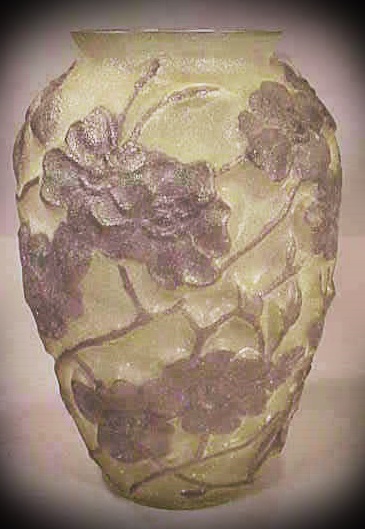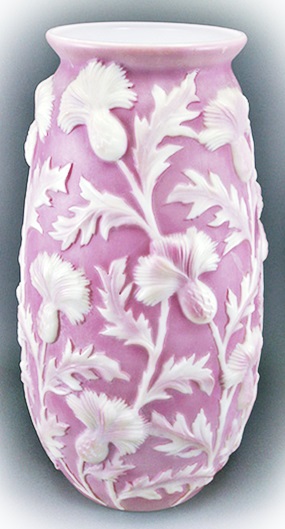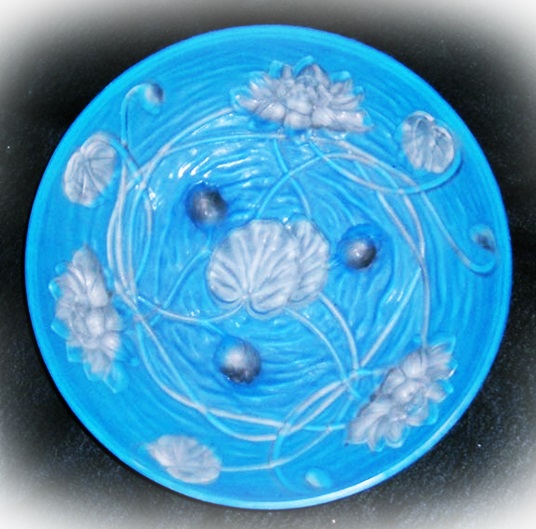This section contains articles about the Phoenix Glass Company in Monaca Pennsylvania.
Phoenix Glass Company is still located in Monaca, Pennsylvania, but no longer has the facilities to produce hand-made art glass. Phoenix began production of art glass in 1932 when 45-50 molds from the Consolidated Glass Company were moved to Phoenix and used until early 1936. This occurred because Consolidated Glass Company had been forced to shut down because of the Great Depression.
The earliest production at Phoenix was called the "Reuben Line" and originally had oval paper labels on each piece with the wording "PHOENIX GLASS REUBEN LINE." Most of those paper labels have been lost over the years and today the "Reuben Line" pieces are usually identified by the finishing technique. E.G., many of the items in the "Reuben Line" were vases made from Consolidated molds; however, the "Reuben Line" finishes were solid colors (light blue, dark blue (Reuben blue), green, white, yellow, light pink, etc.) hence the "Reuben Line" pieces are quite different in appearance from the pieces made at Consolidated Glass Company (which typically were decorated in bi- or tri-colors on milk glass or custard glass).
Phoenix also designed new molds which became their "Sculptured Art Glass" line. The initial work on that line was done by Kenneth Haley, son of Reuben Haley. The earliest versions of Sculptured Art Glass had silver Phoenix paper labels. Later versions featured gold paper labels. Phoenix produced Sculptured Art Ware on and off into the 1960's. The company is still in business; however, they no longer have hand mold facilities and will never again make Sculptured Art Ware.
Unusual Phoenix Glass
This slideshow illustrates some unusual Phoenix art glass examples.
Chipped Ice finish on Wild Rose vase
Mauve Thistle Umbrella Vase
Reuben Blue Lily Bowl
Forest Green Wild Geese Vase
Copyright©; 2013 by Jack D. Wilson. All Rights Reserved. Reproduction in any form, in part or in whole is prohibited without written permission.
by Janet Stuehling Zoeller
In the small town of Monaca, PA, the Phoenix Glass Company stretched out in the middle of town. It was an important part of our lives as most families had someone employed there. I suppose we were an industrial town but we never felt like one. Monaca was a safe and tranquil community and I truly believe that we children were raised by the whole neighborhood. We knew they cared about us and that was important. We tried up live up to their expectations.
I'm sure my kids are tired of hearing tales of my wonderful childhood when nobobdy worried when we spent hours exploring the banks of the Ohio river. My mother taught in the elementary school and my dad was as town policeman. My friends knew and liked my parents and I felt very secure. My friend Peggy worked in the Phoenix office after we graduated in 1952. She bought here mother an umbrella vase for $10.00 She said the employees were able to purchase the glassware for one half of the regular price.
Another classmate, Mike, is extremely creative, intelligent and a gifted artist. He has told me many funny stories about his lack of ability to learn how to blow glass. He said he was totally incapable of learning how to blow glass and has a profound respect for those who learned the art.
When I was growing up, an appliance breakdown was no cause for alarm. Mr. Balumet, who owned the electric shop, either repaired or replaced it. In his store there was a high shelf along the left wall from the front to back, filled with Phoenix umbrella vases. I always looked with amazement at that shelf and wondered who would ever want all of those. (Editor's Note: See page 177 of the book for some history of what happened to the Phoenix vases from Balumet. The lot of 353 vases, in storage since 1938 was sold to Fritz Sturbeck of Havre de Grace, MD (a wholesale antiques dealer) in 1990 for $10,000.
In our home thre was always a large round blue Phoenix bowl and two matching candle holders on the dining room buffet. One day I found the bowl filled with fruit, bananas, apples, grapes and oranges. I invited the gang from the playground across the street to come over and admire and sample. I now realize that my mother's displeasure was probably caused by her concern for her precious glassware and not my generosity.
I remember holding the Phoenix nude plates and bowls up to the light to get a better look. I thought they were pretty racy and was shocked that my parents owned such things.
It seemed that everyone smoked in the forties. I never heard my mother complain but she kept a supply of ashtrays on every surface. I never saw any ashtrays in our house that were not Phoenix. There were small square ones and larger heavy ones. They were so well used that few of them have survived in the family.
A few months ago I unearthed a Phoenix ashtray and showed it to my husband Fred. He glanced at it and remarked that he never paid much attention to ashtrays. A week or so later, he rushed into the house waving a chipped milk glass ashtray with pink flowers on the bottom. He had been in Monaca and passed a trash barrel. He noticed a "shape" sticking out of the trash and kept thinking about why it caught his attention. Later he went back and dug it out. I hope nobody saw him.
As my mother aged, she said that we needed to go through the big old kitchen cupboard so that she could tell me where the different pieces of glassware had come from.
I wish we had done it. Why didn't we?




